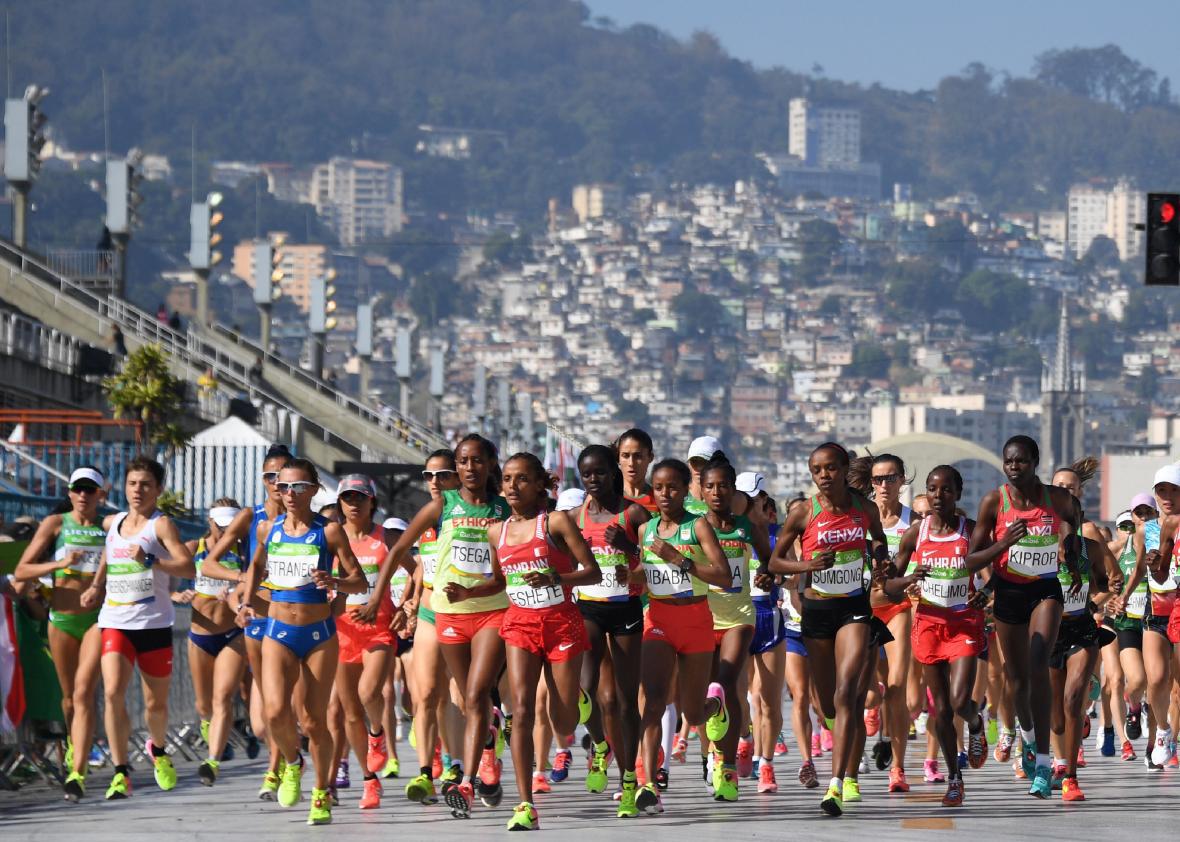On Thursday, Runner’s World published the results of a survey of 4,670 runners about safety and harassment, and it turns out that both men and women feel extremely safe and respected while running. Just kidding! Women get harassed and threatened way more often than men do. Forty-three percent of female runners who took the poll said that they receive unsolicited sexual attention, comments about their bodies, honks, whistles, and other types of harassment “always,” “often,” or “sometimes.” Only 4 percent of male runners said that they got sexually harassed with a similar frequency. Harassment is an even worse problem for younger women: 58 percent of women under 30 reported that they get harassed while running at least sometimes. Women who responded to the survey shared stories of hearing comments like “nice tits,” “let’s gang rape her,” and “ungrateful bitch” while out jogging.
“In the vast majority of cases, it’s not life-threatening,” writes Runner’s World contributing editor Michelle Hamilton in a special report accompanying the survey results. “But it is pervasive, and it’s upsetting, and it’s most likely happening to you or someone you know.”
The participants in the Runner’s World survey weren’t randomly selected—they opted to take the survey after Runner’s World put out a call on social media—so it’s not accurate to imply, as some have, that the survey results reflect the experiences of all runners. There could certainly be some selection bias at work, although Runner’s World framed the survey as being about “how at ease runners feel on the roads and trails where they usually log miles,” not about sexual harassment. That neutral framing hopefully attracted runners from a wide range of backgrounds.
Regardless of the survey’s methodological shortcomings, the stark difference between men’s and women’s reported experiences surely isn’t a result of selection bias. Sixty-three percent of women said they choose their running routes based on how physically safe they feel, compared with just 23 percent of men. Thirty percent of women said they had been followed by a stranger while running, compared with just 7 percent of men. And 60 percent of women said they’d limited their runs to daylight hours due to concerns about safety or harassment. Only 14 percent of men said the same.
If you’re a woman, these results probably don’t surprise you. If anything, you might be surprised that only 43 percent of women said they experience harassment while running sometimes, often, or always. (The remaining 57 percent of women include those who said they “rarely” get harassed. Maybe the women who say they “never” get harassed wear headphones while they run, so they just don’t hear the harassment?)
If you’re a man, you might be shocked by what women endure when they exercise outdoors, the way Runner’s World editor-in-chief David Willey was when his female colleagues began talking about harassment during an editorial meeting over the summer. “Several women began talking about how common it is for them to be ogled, catcalled, propositioned, and even followed while they’re out running,” he writes in an editor’s note introducing the special report. “I was stunned, outraged, and (because they were so surprised that I was so surprised), embarrassed.”
In this day and age (and, ahem, presidential election), it should be common knowledge that sexual harassment is simply part of the daily fabric of women’s lives, regardless of what we look like, how old we are, and how we dress. Runner’s World deserves props for spreading that message to people who might not have heard it yet (i.e., men who subscribe to a print magazine about running). And Hamilton gives those men some suggestions for how not to be part of the problem: “When a woman runner shares a story of being targeted, asking her what she was wearing or whether she was alone implies that at least some of the blame might fall on her, when in fact the choice to harass belongs to the man alone.” She also suggests that men speak up when they hear other men saying or doing sexist things. Even though sexual harassment isn’t unique to the world of running, men who run can be part of the solution—but only if they realize that harassment is a big problem in the first place.
